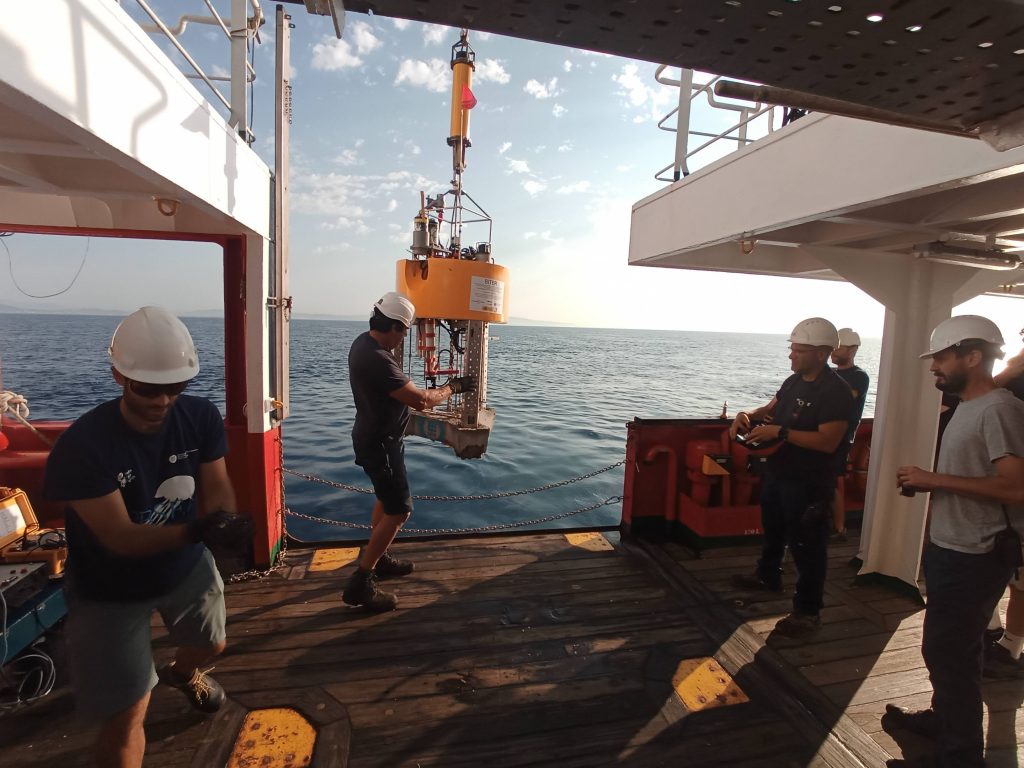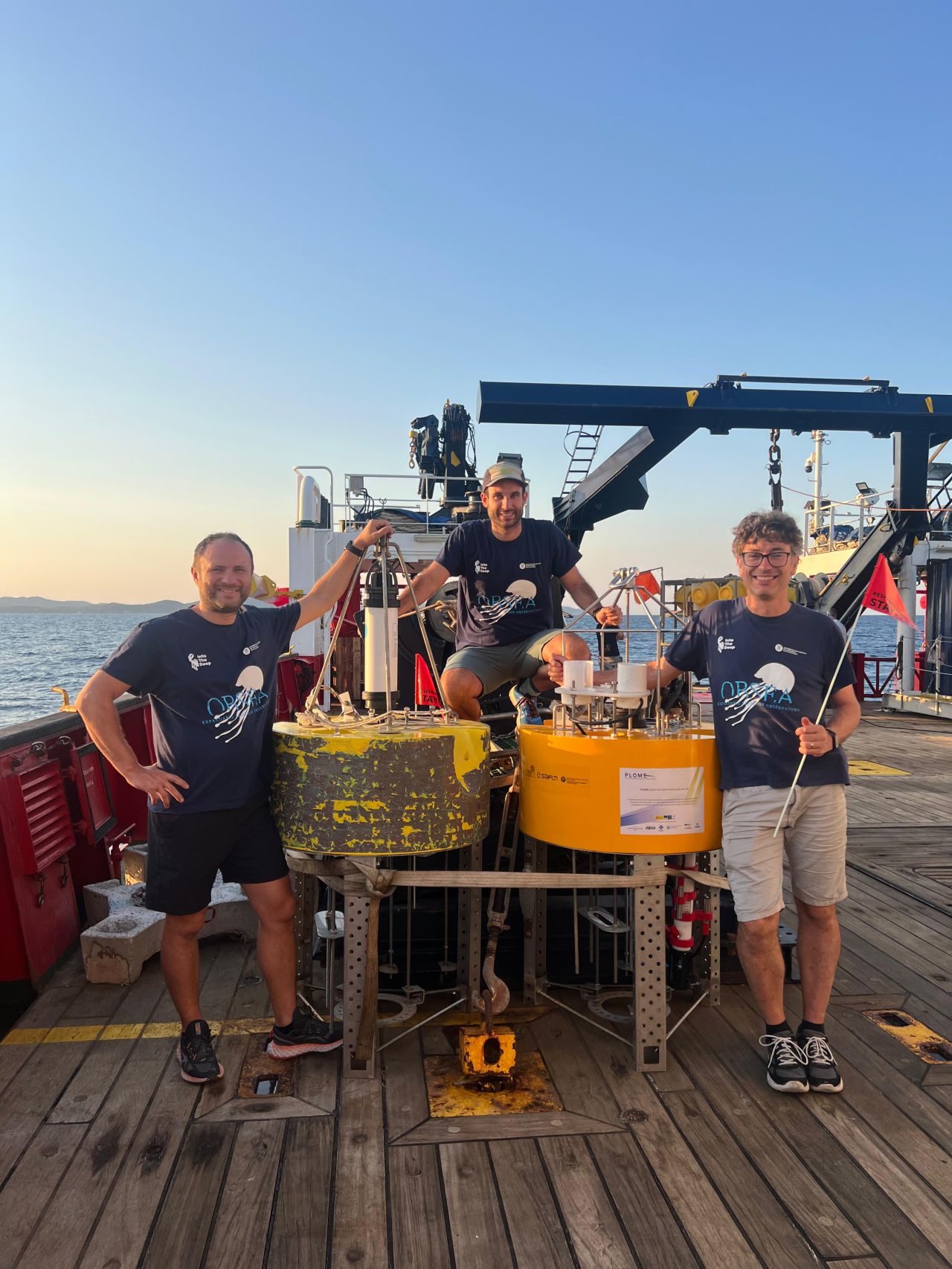Between 14 and 24 July 2025, the PLOME consortium carried out a major offshore campaign aboard the oceanographic research vessel R/V Sarmiento de Gamboa. The expedition focused on the Marine Protected Areas (MPAs) of Palamós and Tossa de Mar—two sites that are representative of Mediterranean deep-sea ecosystems impacted by fishing activities. The campaign showcased how combining fixed and mobile platforms can provide a comprehensive, real-time view of the seafloor environment, supporting PLOME’s goal of developing a persistent and intelligent monitoring system for deep-sea ecosystems.
OBSEA Landers: in-situ observatories for the deep sea
A central role in the campaign was played by the OBSEA landers, multiparametric benthic observatories developed by the UPC’s SARTI-OBSEA research group. These expandable and transportable platforms are conceived as a natural extension of the OBSEA cabled observatory concept, designed to be easily deployed from both research and fishing vessels. They can operate autonomously on the seafloor for up to six months at depths of 500 metres, continuously gathering high-resolution seafloor images and key environmental variables such as temperature, salinity, oxygen, and turbidity.
During the campaign, UPC deployed OBSEA landers equipped with underwater cameras, environmental sensors, and acoustic positioning systems. Acting as in-situ laboratories, they provided data on local environmental conditions while assisting the Girona 1000 AUV in refining its underwater navigation using acoustic range measurements. One lander also integrated a static underwater camera connected to real-time image-recognition algorithms developed by UIB, enabling automated detection of fish and other organisms on the seafloor—a first step toward intelligent biodiversity monitoring in deep environments.
Testing innovative communication pathways
Beyond sensing and imaging, the UPC landers also acted as communication nodes within the PLOME architecture. The campaign tested multiple data-transfer pathways developed within the project:
- Optical modem links between landers and AUVs for high-bandwidth in situ exchange.
- Pop-up surface buoys, released directly from the landers, provide a flexible solution for data relay and retrieval without dedicated research vessels.
- Acoustic communication through surface buoys, powered by advanced algorithms developed by Universidad Politécnica de Madrid (UPM), ensures robust data transmission in challenging conditions.
These tests demonstrated how distributed nodes on the seafloor can be networked with mobile platforms and surface gateways, laying the foundation for scalable, long-term observation networks.
Towards intelligent and scalable observation systems
The PLOME campaign illustrates how OBSEA lander technology can act as a backbone of multipoint deep-sea observation. By combining endurance, modularity, and interoperability, these systems are not only useful as standalone observatories but also as integrated hubs within a larger monitoring infrastructure. Their capacity to host imaging systems, acoustic sensors, and biogeochemical probes makes them versatile tools for marine science.
The OBSEA landers’ capability to support real-time AI-based detection and adaptive robotic surveys positions them as truly smart observation platforms. Instead of functioning as passive recorders, they enable on-site, data-driven decision-making that optimises sampling strategies and enhances the spatial and temporal resolution of ecological observations. This functionality marks an important step toward the Digital Twin of the Ocean (DTO), where continuous in-situ data streams feed dynamic models to simulate and predict marine ecosystem processes.

Figure 1: SARTI team with the OBSEA lander aboard the R/V Sarmiento de Gamboa.
Figure 2: Deployment of the OBSEA Lander
Authors: Daniel Miahi Toma and Ikram Bghiel, UPC – OBSEA


